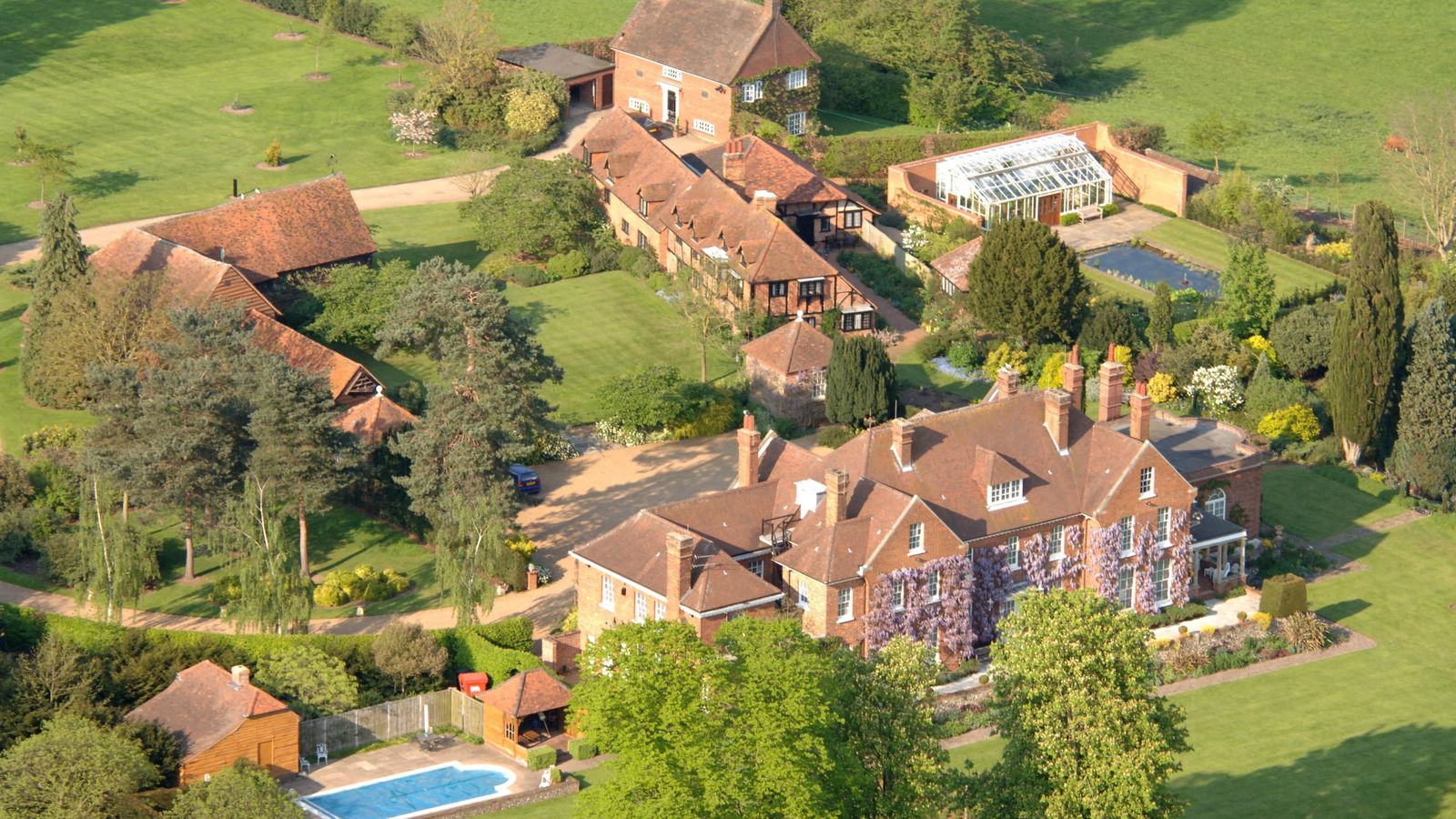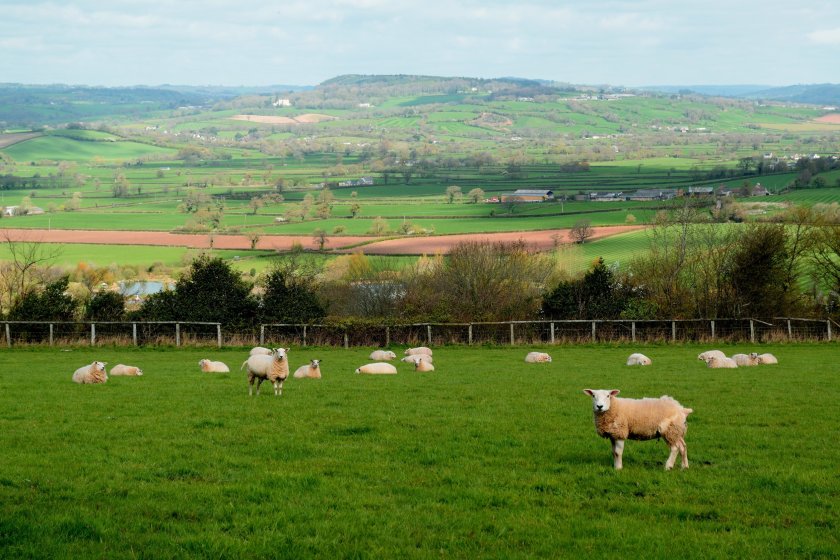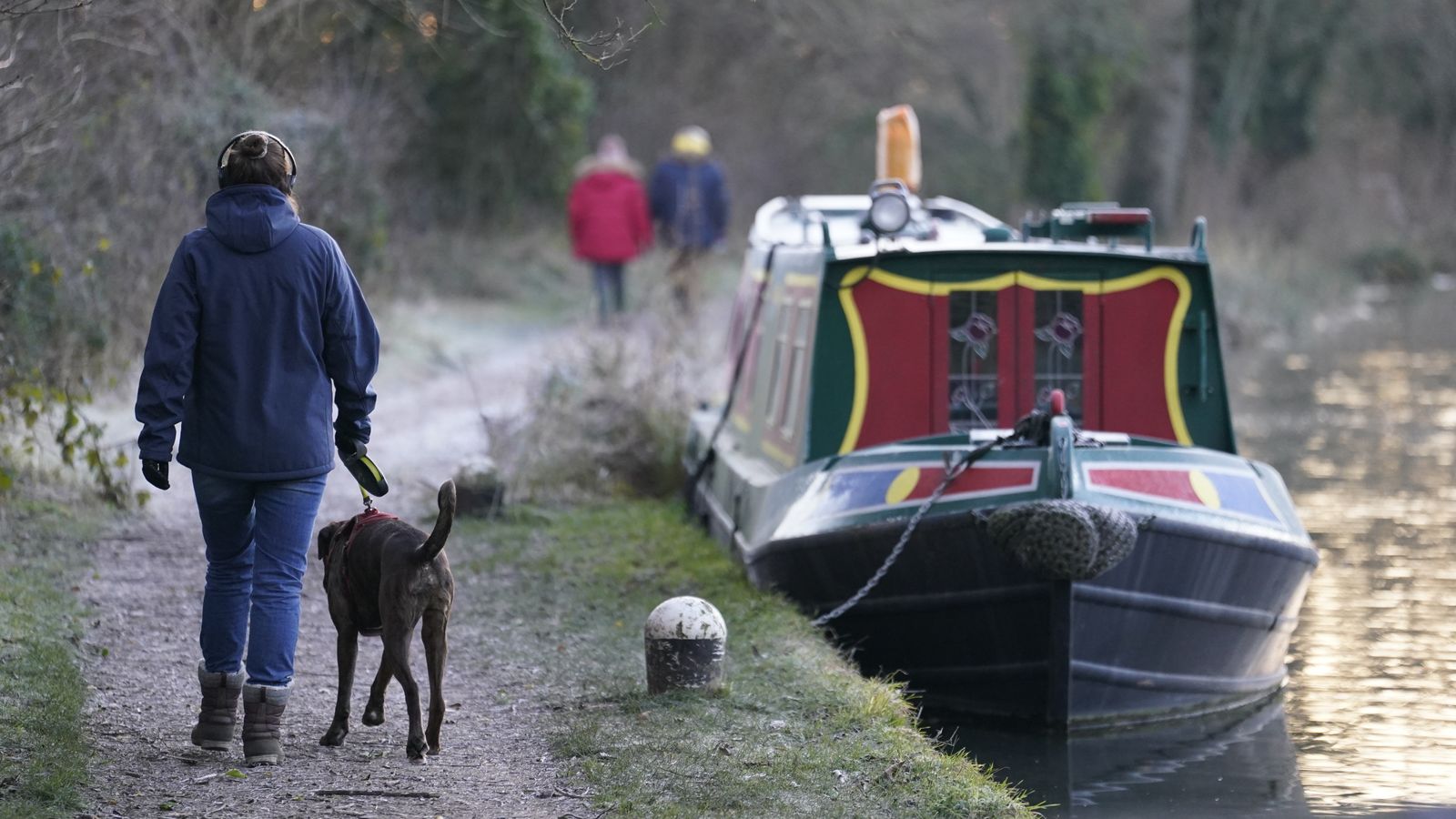image source, Woodland Trustimage caption,
The Waverley Abbey yew tree has been described as “spectacular”
A “magnificent” Surrey yew tree, which is thought to be more than 500 years old, has been named the Woodland Trust’s Tree of the Year.
The tree is growing in the grounds of the ruined Waverley Abbey near Farnham.
A Portal Tree in Midlothian and a horse chestnut tree in Derbyshire were voted second and third respectively.
The competition aims to highlight how important trees are in the battle against climate change, the organizers said.
Here are the twelve finalists, listed from first to last place:
Waverley Abbey Yew in Surrey
image source, Woodland Trustimage caption,
The yew tree at Waverley Abbey is thought to be about 500 years old
Tom Reed from the Woodland Trust said: “It is great to see that this magnificent tree has been recognized as Tree of the Year 2022 and the way the tree is rooted within the ruins of the abbey is a great symbol of the fact that our ancient trees are intertwined with other aspects of our cultural heritage.”
The yew will go on to represent the UK in the European Tree of the Year competition.
The roots of the yew are growing into and around the ruins of the English Heritage site, Waverley Abbey – the first Cistercian monastery founded in Britain 900 years ago, the Woodlands Trust said.
Dr Michael Carter, English Heritage senior properties historian, added that the tree was a “truly spectacular reminder of the passage of time and a very worthy winner of tree of the year”.
The Portal Tree Rowan in Midlothian
image source, WOODLAND TRUST
The tree grows in the grounds of the ruins of Mavisbank House, one of Scotland’s most important historic houses.
The landscaped grounds were developed at a similar time to the house, in about 1748.
Chestnut Layering Horse in Derbyshire
image source, WOODLAND’S TRUST
The original trunk stands hollow and decaying, while the branches have fallen to its sides.
In a process called layering, roots have sprouted from the fallen branches, anchoring them to the ground. Eventually, these branches will turn into trees in their own right, all genetically identical to the original parent trunk.
The Escley Oak in Herefordshire
image source, WOODLAND TRUST
The ancient oak is hollow but still hale and hearty, despite being at least 400 years old.
It stands alone in a meadow along a public footpath, north of Shobdon barn.
The Rolls of Monmouth Oak in Monmouthshire
image source, Woodlands Trust
The tree is located on the private Rolls of Monmouth golf course, next to hole 16 – named the Great Oaks due to the presence of several nearby large oaks.
This tree is the largest, with a huge girth of 9.55m, and is believed to be more than 500 years old.
The Flitton Oak in Devon
image source, WOODLAND TRUST
The tree is believed to be about 700 years old.
Set in a triangular copse of trees where three roads intersect in North Molton, the ancient oak splays out with eight enormous limbs dripping with moss and lichen, and is a haven for many species.
Kilbroney Oak in County Down
image source, WOODLAND’S TRUST
The natural landscape of the Kilbroney estate is believed to have been the inspiration for the fantasy world in CS Lewis’ Chronicles of Narnia.
This tree is thought to be more than 300 years old.
Holly on the Hill in North Yorkshire
image source, WOODLAND’S TRUST
As with many old hollies, the stem is a collection of stems that have been fused and grown together over a long time.
These stems range from two to six meters in diameter.
The Burnbanks Oak in Cumbria
image source, WOODLAND TRUST
The tree is a sessile oak standing on what was an island before the Haweswater dam changed the landscape below it in the 1930s.
The tree is most likely a lapsed coppice or a remnant of a Bigfoot oak that has collapsed and regrown.
The ’12 Apostles’ Lime in Gloucestershire
image source, WOODLAND’S TRUST
Believed to be more than 250 years old, the tree is located on the south-eastern path leading up to St James Churchyard in Chipping Campden.
This tree is the largest of an avenue of 12 trees that were planted to represent one of the 12 apostles.
The Langley Park Sweet Chestnut in Montrose
image source, WOODLAND’S TRUST
The tree stands proud on top of a mound within the grounds of Langley Park House.
The age of the tree is not known, but it is almost certainly as old, if not much older, than the original Georgian house, which dates to the 18th Century.
Hedgerow Hawthorn in Cumbria
image source, WOODLAND TRUST
The twisted tree forms part of a small line of hawthorn trees that mark the site of a former land boundary, which is a common theme for this specimen.
This tree still bears the signs of past management, with a complicated multi-stem form that has been allowed to sprawl since it ceased to be managed as a hedgerow.
Follow BBC South East on Facebook, on Twitter, and on Instagram. Send your story ideas to [email protected].
Related internet links
The BBC is not responsible for the content of external sites.


























